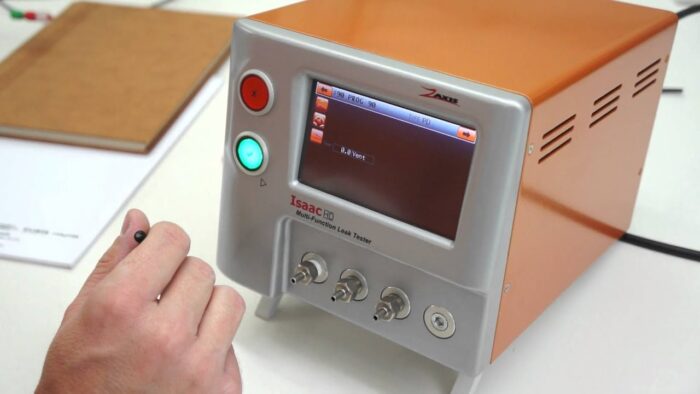Heavy machinery is the backbone of industries like construction, mining, agriculture, and manufacturing. These machines, designed to handle enormous workloads, rely on precision parts to perform optimally.
One of the most crucial components for maintaining the efficiency and safety of heavy machinery is the selection of the right fittings. Fittings, though small, play a vital role in connecting parts, sealing fluid systems, and ensuring that the machine operates under the correct pressure and temperature conditions.
In this comprehensive guide, let’s walk you through the basics of hydraulic fittings, the key factors to consider when selecting them, common mistakes to avoid, and tips for installation and maintenance. Whether you’re a beginner or looking to improve your understanding of heavy machinery fittings, this guide will equip you with the knowledge to make informed decisions.
Understanding Heavy Machinery Fittings
What are Fittings?
Fittings in heavy machinery refer to components that connect various parts of a machine’s fluid systems, such as hydraulic or pneumatic systems. These fittings are designed to help regulate the flow of fluids—whether oil, water, or gas—under extreme pressure and temperature.
They provide the necessary connections to transmit power, fluids, or gases from one part of the machine to another. Without proper fittings, machinery would lose efficiency and, in extreme cases, become unsafe to operate.
Types of Fittings
There are several types of fittings used in heavy machinery, each with specific functions depending on the system in which they are employed:
- Hydraulic Fittings: These are essential in machinery that relies on hydraulic power. They must be able to withstand high pressures while maintaining a tight seal.
- Pneumatic Fittings: Used in machines that operate with compressed air, pneumatic fittings need to offer good sealing properties while allowing for some flexibility.
- Compression Fittings: These fittings create a tight connection between tubing and pipe, used frequently in both hydraulic and pneumatic systems.
- Threaded Fittings: Threaded fittings rely on matching screw-like threads to seal pipes and other components together. They are common in systems that don’t require frequent disassembly.
Each type of fitting plays a critical role in ensuring that heavy machinery performs its tasks without failures, leaks, or pressure drops.
Key Factors to Consider When Selecting Fittings
Selecting the right hydraulic hose fittings is not as simple as picking a part that fits. There are several factors you need to consider to ensure that the fitting you choose is compatible with the machine, capable of withstanding operational conditions, and designed for long-term use.
Compatibility with Machinery
The first and foremost consideration when choosing a fitting is whether it’s compatible with the machinery you’re working with. Not all fittings are universal, and selecting the wrong type can lead to operational failures. Compatibility involves both the physical size and threading of the fitting as well as the material.
Tip: Always ensure that the fittings are designed for your specific machinery model. For example, fittings for high-pressure hydraulic systems in construction equipment may not work for agricultural machinery that operates at lower pressures.
Pressure and Temperature Ratings
Heavy machinery often operates under extreme conditions, including high pressure and temperature fluctuations. When selecting fittings, it’s crucial to check the pressure and temperature ratings to ensure they meet the demands of the application.
For example, hydraulic systems in excavators or bulldosers operate at pressures exceeding 5,000 PSI. Using a fitting that’s not rated for this pressure could lead to catastrophic failure, resulting in downtime, costly repairs, and safety hazards.
Similarly, temperature fluctuations can cause fittings to expand or contract, leading to leaks if the material isn’t designed to handle such changes. Look for fittings with appropriate temperature ratings to ensure longevity and reliability.
Material Selection
The material of the fitting is another critical factor that impacts its performance and durability. Different materials offer varying degrees of resistance to pressure, temperature, corrosion, and wear. Below are some common materials used for heavy machinery fittings:
- Stainless Steel: Known for its strength and corrosion resistance, stainless steel is ideal for high-pressure applications and environments exposed to moisture, chemicals, or saltwater.
- Brass: While less durable than stainless steel, brass fittings offer excellent corrosion resistance and are often used in applications where lower pressure and temperatures are involved.
- Carbon Steel: This material is strong and durable but may require additional coatings or treatments to prevent corrosion, especially in outdoor environments.
- Plastic (Nylon or PVC): Although not as strong as metal fittings, plastic fittings are lightweight, cost-effective, and often used in low-pressure, low-temperature environments.
Choosing the right material for your fittings ensures that they can withstand the working conditions of your machinery. Below is a table summarising the pros and cons of each material:
Size and Thread Type
Size and thread type are crucial in ensuring that the fittings connect securely and function properly. Most fittings come in standard sizes, but it’s essential to measure the pipes, tubes, or hoses you’re working with to ensure a tight fit.
Thread type is equally important. Common thread standards include:
- NPT (National Pipe Thread): A U.S. standard for tapered threads, used primarily in hydraulic and pneumatic applications.
- BSPT (British Standard Pipe Taper): A British standard thread, commonly used in Europe.
- JIC (Joint Industry Council): Often used in high-pressure hydraulic applications, JIC fittings offer excellent sealing properties.
Selecting the wrong thread type can lead to mismatches, leaks, or fitting failures.
Application-Specific Needs
Different types of heavy hydraulic fittings machinery require specialised fittings depending on their application. For example, construction equipment like excavators may require heavy-duty hydraulic fittings capable of withstanding extreme pressures, while agricultural equipment may need corrosion-resistant fittings to deal with exposure to fertilisers and water.
For specific industries:
- Construction: High-pressure hydraulic fittings and corrosion-resistant materials like stainless steel are essential.
- Mining: Consider fittings with heavy-duty sealing properties and the ability to resist wear from abrasive materials.
- Agriculture: Look for fittings that resist corrosion from water and chemicals while maintaining flexibility for different attachments.
Common Mistakes to Avoid
Selecting the wrong fittings can lead to costly repairs, machine downtime, and even safety hazards. Here are some common mistakes to avoid when choosing fittings for heavy machinery:
- Ignoring Pressure and Temperature Limits
A common mistake is selecting fittings without verifying their pressure and temperature ratings. For example, choosing a low-pressure fitting for a high-pressure hydraulic system can lead to leaks or bursts. Always check the manufacturer’s specifications to ensure that the fitting meets or exceeds the operating conditions of the machine.
- Using the Wrong Fitting Material
Material mismatch is another frequent issue. For instance, using brass fittings in an environment with high corrosion potential (e.g., a saltwater environment) can lead to premature fitting failure. It’s essential to select materials that match the environmental and operational conditions.
- Choosing the Wrong Size
Many beginners make the mistake of selecting fittings that don’t properly match the size of the pipes or hoses. Even a small size mismatch can result in leaks, pressure drops, and reduced efficiency. Always take precise measurements of the pipe or hose diameter before purchasing fittings.
- Overlooking Maintenance Requirements
Not all hydraulic hose are created equal when it comes to maintenance. Some fittings may require more frequent checks and tightening, while others offer better longevity with minimal intervention. Consider the ease of maintenance when selecting fittings to ensure long-term reliability.
Steps to Properly Install and Maintain Fittings
Proper installation and maintenance of fittings are crucial for the optimal functioning of heavy machinery. Here’s a step-by-step guide for installing and maintaining fittings.
Installation:
- Prepare the Components: Before installation, ensure all parts (pipes, hoses, and fittings) are clean and free of debris.
- Lubricate Threads: For threaded fittings, apply the appropriate thread sealant or lubricant to prevent galling and ensure a tight seal.
- Tighten Securely: Use the correct tools to tighten the fitting, but avoid over-tightening, which can damage the threads.
- Check for Leaks: After installation, run the machine and check for any leaks at the connection points. Re-tighten as necessary.
Maintenance:
- Regular Inspections: Perform routine checks for signs of wear, leaks, or corrosion.
- Tighten Loose Fittings: Over time, vibrations from machinery can cause fittings to loosen. Periodically check and tighten them as needed.
- Replace Damaged Fittings: If a fitting shows signs of wear, rust, or damage, replace it immediately to avoid costly system failures.
Where to Source Quality Fittings
Sourcing quality fittings is just as important as selecting the right ones. Here are some tips to help you find reliable suppliers:
Trusted Manufacturers
Look for well-established manufacturers with a reputation for producing high-quality fittings. Brands with industry certifications are a good choice, as they are more likely to meet stringent quality standards.
Quality vs. Cost
While it may be tempting to opt for cheaper fittings, remember that in heavy machinery, quality should always come first. Inferior fittings may save you money upfront but could lead to costly repairs, downtime, and even safety hazards in the long run.
Certification and Standards
Always choose fittings that comply with industry standards, such as ISO, ASME, or SAE certifications.
Conclusion
Choosing the right fittings for heavy machinery is a critical task that requires careful consideration and understanding of various factors. From compatibility and material selection to pressure ratings and proper installation, each aspect plays a vital role in ensuring the efficiency, safety, and longevity of your equipment.
By avoiding common mistakes and following best hydraulic fittings practices for installation and maintenance, you can significantly reduce the risk of equipment failure and enhance the performance of your machinery. Always prioritise quality over cost, sourcing fittings from reputable manufacturers that meet industry standards.
Whether you’re a beginner or looking to refine your knowledge, this guide serves as a foundation for making informed decisions in the world of heavy machinery fittings. Armed with this information, you can ensure your machinery operates smoothly and reliably, ultimately contributing to the success of your projects and endeavours.





